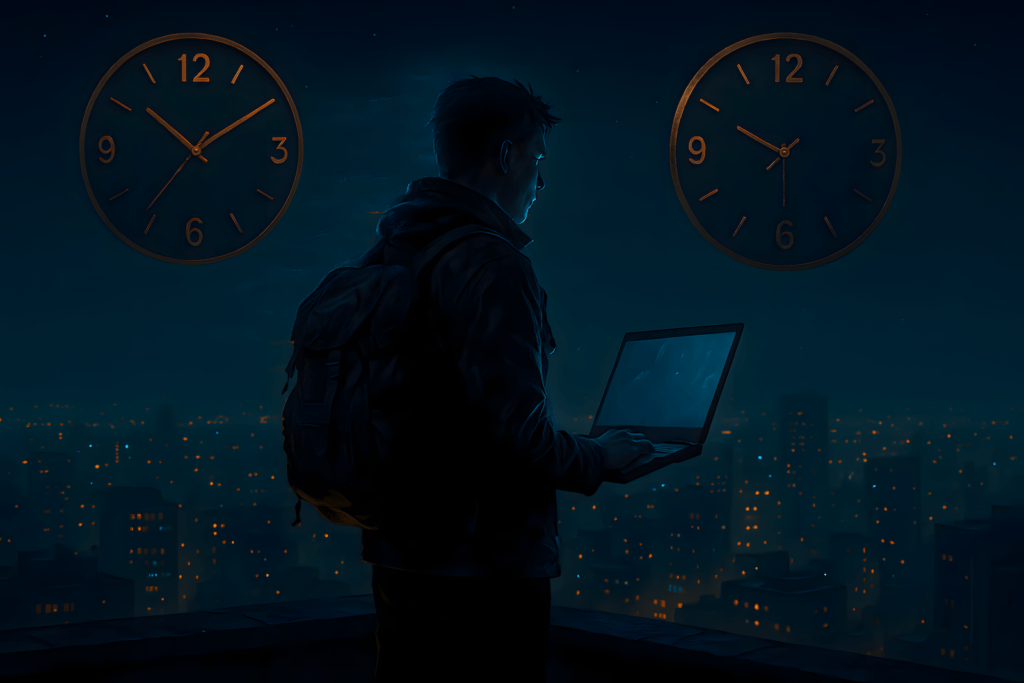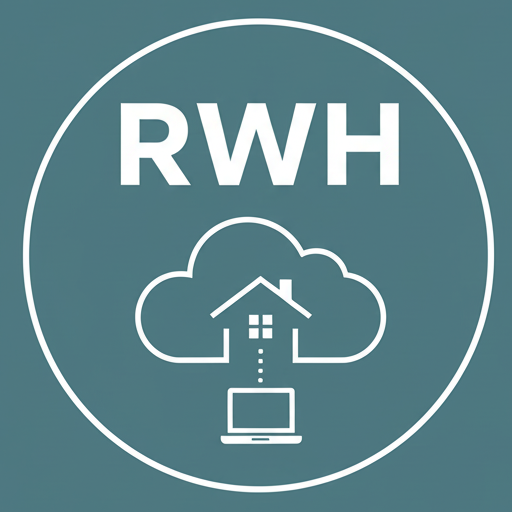The Freedom Fantasy Breaks Fast
You landed in Bali. Or Lisbon. Or Mexico City.
Coffee’s great, views are better—but something’s off. You’re tired, scatterbrained, and running behind on work you used to crush.
Digital nomad burnout isn’t a rare edge case. It’s the default if you don’t build a system that travels with you.

1. Burnout Isn’t About the Workload—It’s the Constant Reset
Every time you move:
- Your timezone shifts
- Your food and sleep patterns break
- Your routines reset
- Your energy tanks
Most digital nomads build freedom, not stability.
They optimize for flexibility and novelty—then wonder why they feel mentally shredded by week three.
2. The “Chill Café Office” Setup Will Kill Your Output
Trying to run deep work from noisy cafes, hotel beds, or hammocks?
That’s not freedom. That’s workplace roulette.
You’re relying on:
- Unstable power and Wi-Fi
- Poor seating and lighting
- Zero insulation from distraction
- No signal to your brain that it’s go time
📌 Reference: Working from Home Is Overrated — Unless You Do This
The solution? Mobile Control Room thinking.
You need gear, routines, and space triggers that travel with you.
3. What a Real Mobile Work System Looks Like
You don’t need a suitcase full of monitors.
But you do need a repeatable, modular setup you can deploy anywhere.
Essentials:
- Lightweight laptop stand + external keyboard/mouse
- Quality noise-canceling headphones
- Portable hotspot (stop relying on hostel Wi-Fi)
- Fixed digital routine (same time zone rules, regardless of location)
Rituals matter. Your brain needs signals:
“Now it’s focus time.”
If your setup is chaos, your output will be too.
4. Timezones Will Eat You Alive Without Structure
Jumping 6–12 hours between clients, teams, or work hours?
That’s not a nomad flex—it’s a cognitive drain.
Stop adjusting your day around everyone else.
Build a timezone-flex protocol that includes:
- Dedicated work hours (you control the block)
- Async communication rhythm (batch send updates, don’t chase pings)
- Sleep-first scheduling (no 2am Zooms unless your life depends on it)
You can be globally available without destroying your internal clock.
📌 Reinforce your async survival strategy with: Remote Work Discipline Is the New Job Security
5. Travel Itinerary ≠ Work Rhythm
Too many nomads build their life around tourist days, not delivery days.
They prioritize:
- Excursions
- Beach breaks
- Instagram b-roll
Then cram in work at midnight, fueled by guilt and cheap Wi-Fi.
That’s not freedom. That’s remote panic mode.
The fix?
- Lock your work rhythm first
- Let the destination adapt around it
- Don’t stack tasks and tours in the same window
- Every city needs a warm-up phase (don’t expect peak productivity on day 1)
6. Burnout Recovery on the Move Isn’t Optional—It’s Tactical
Your system should include:
- A default recovery stack (sleep protocol, off-grid time, movement)
- Environmental checklists (light, posture, privacy)
- Mental hygiene checkpoints (Are you tired, or just disorganized?)
“It’s just a rough patch” is how burnout turns permanent.
📌 For deeper fatigue cues, check You’re Not Resting — You’re Just Pausing
TL;DR — Mobile Freedom Demands Fixed Systems
- Burnout doesn’t care where you work from—it hits harder without structure
- Café nomadism isn’t sustainable if your output matters
- Your gear, routine, and timezone rhythm are your true office
- Stop reacting to locations. Build a system that travels with you.

